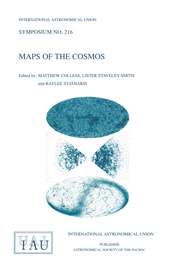No CrossRef data available.
Article contents
Circumstellar Chemistry of AGB Winds
Published online by Cambridge University Press: 25 May 2016
Abstract
Carbon-rich AGB stars are an excellent place to study circumstellar chemistry. The best case is IRC +10216, where observations at optical, infrared, and radio wavelengths have led to the discovery of more than 50 molecules. When the detected species are grouped in chemically related families, the observed spatial distributions and abundances can be understood with a photochemical model. Most of the species are either progenitors that arise in the photosphere or inner envelope, or are unsaturated radicals and hydrocarbon chains photochemically produced in the outer envelope. The few saturated molecules with a single heavy atom are probably produced on grain surfaces. Inside the ionization radius of atomic carbon, the circumstellar envelope of IRC +10216 is weakly ionized by suprathermal particles. The HCO+ detected and mapped in the J = 1 − 0 line by the IRAM telescopes can be interpreted as arising from either partially-excluded galactic cosmic rays or β-particles emitted by radioactive nuclei dredged up from the H-burning zone into the wind. An estimate of the ionization rate due to 26Al based on the 26Al/27Al ratio of “mainstream” pre-solar grains is the same order of magnitude as determined from the measured abundance of HCO+ in IRC +10216.
- Type
- Part 4. Circumstellar Envelopes
- Information
- Symposium - International Astronomical Union , Volume 191: Asymptotic Giant Branch Stars , 1999 , pp. 337 - 346
- Copyright
- Copyright © Astronomical Society of the Pacific 1999


